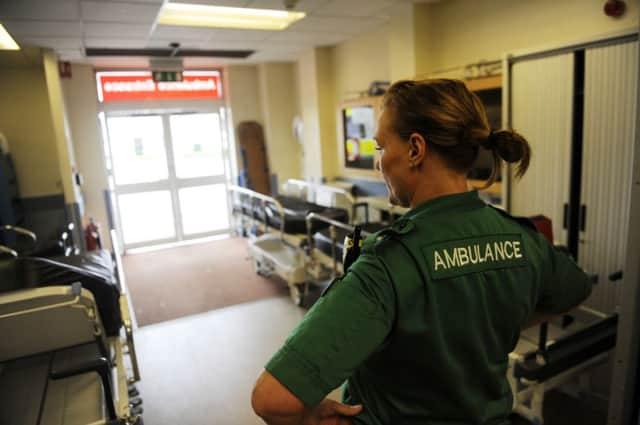Lyndsay Buckland: Case for treatment on A&E


It is for this reason that so much attention has been focused on Scotland’s A&E services since a chaotic winter in 2012-13 saw patients facing long waits as hospitals struggled with outbreaks of the norovirus closing wards and limiting bed numbers.
This week, a report by Audit Scotland confirmed what many people already know. In the last five years, waits in A&E have increased as demand for services grows and pressure elsewhere in the health system impacts on the ability of staff to admit patients as speedily as they would like.
Advertisement
Hide AdAdvertisement
Hide AdThe report also highlighted another worrying trend. While most patients were treated within the four-hour target, many of these were only seen within the last ten minutes of this timeframe.
In 2012-13, 70,000 patients were dealt with in the final minutes before they breached the target. No doubt someone somewhere was watching a clock, keen for their hospital and health board to get as close to meeting the standard as possible.
A major problem appears to be capacity elsewhere in hospitals which means staff cannot admit patients who need to stay in hospital to an appropriate bed. This is an issue which comes up again and again. It is something medical experts have warned about but which is also something hard to solve.
The Scottish Government has taken action in the last year with a £50 million plan to improve emergency care. This has seen more staff put in A&E departments to try to make sure people are seen as quickly as possible.
There have also been moves to make sure only patients who really need to be in A&E turn up there, rather than seeing it as a handy resource for any health problem at any time, even when other services such as GP practices are open for business.
The last year has seen improving performance in A&E after that terrible winter, and performance against the four-hour target does appear to be picking up again.
But there is no doubt that something has to happen across the whole hospital system if we are to speed people’s journeys through A&E and make sure those who need urgent care get it as quickly as possible, no matter how bad the winter is.
Many believe increasing bed and staff numbers would help, but whether the NHS can afford this in the longer term is another matter.